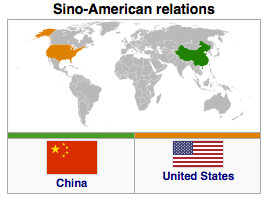Myanmar And Bangladesh In US’ China-Containment Strategy – Analysis
By SAAG
By Dr Subhash Kapila
United States foreign policy formulations are marked by a significant quintessential characteristic in that its drivers are predominantly strategic in nature and superseding any idealistic political fixations. This once again gets eminently reflected in the new American openings to Myanmar and Bangladesh in recent months.
Myanmar and Bangladesh rose to the fore in United States strategic calculus coincidently with US President Obama’s ‘strategic pivot to Asia’ and to Asia Pacific more specifically.

United States ‘strategic pivot’ to Asia Pacific stood underpinned by an American awakening after a decade of strategic neglect that China’s military rise and new aggressiveness now needed to be met by putting into place a China Containment Strategy. American policies of engagement and congagement with China had not worked.
United States policy planners on surveying the security architecture of their China Containment Strategy on their operational maps would have been struck by the stark fact that while East Asia and South East Asia to a limited extent served its strategic imperatives, it was the Eastern Flank of Asia Pacific that stood bare without any significant strategic presence or a strategic partnership.
The Eastern Flank of the Asia Pacific rested on three countries—Myanmar, Bangladesh and India. While the United States had a Strategic Partnership with India of sorts, there was no such linkage with Myanmar and Bangladesh. Notably, Myanmar in American military perceptions was a military-client state of China and Bangladesh too was indebted to China as countervailing power to India.
Strategically, it would be a strong American policy imperative to unloosen Myanmar and Bangladesh from their strategic linkages with China. Further, for successful implementation of the US strategic pivot to Asia and its corollary of China Containment Strategy, the American security architecture had to incorporate Myanmar and Bangladesh in that architecture.
Of the two, Myanmar has overwhelming military significance for US strategy as Myanmar has physical geographical contiguity with China in its northern and north-eastern confines. Furthermore China has made heavy strategic, military and political investments on Myanmar as part of its counter-containment strategies aimed at the United States.
United States strategic interests on Myanmar are for the very opposite reasons that drove China to woo and invest so heavily and win over Myanmar to its strategic fold.
The United States in a strategic partnership or in a strategically cooperative relationship with Myanmar would be able to deny China a land access to the Bay of Bengal and the Indian Ocean. US would be able to neutralise the carefully crafted overland oil pipelines grid from the Myanmar coast to South China. This was a Chinese military aim to outflank and avoid dependence on the Straits of Malacca for its oil supplies which could be blocked by the United States.
More significantly, the full consummation of a Myanmar-United States strategic relationship would facilitate eventually a second land foothold on continental Asia in addition to Vietnam which is similarly being wooed. Militarily at some time in the future, Myanmar’s Navy and Air Force bases could open up for use by United States as part of China Containment Strategy.
Bangladesh while not enjoying any geographical contiguity with China has what one could call strategic contiguity with China as countervailing power against India and also in the process having a Bangladesh-China Defence Cooperation Agreement.
Bangladesh figures in the strategic calculus of the United States militarily in the Navy and Air Force domains. In the United States China Containment Strategy, with Bangladesh strongly in its fold eventuality exists where the US Navy and US Air Force could use Bangladeshi bases.
Politically, our policy planners view offshore oil-blocks only in economic perspectives. But United States policy planners view these in strategic and military terms. The United States strategic formulations would be to deny to China access to and use of respective offshore oil-blocks of Myanmar and Bangladesh in the Bay of Bengal. It must be remembered that an important component of US China Containment Strategy would be the ‘energy strangulation’ of China.
Concluding, it needs to be highlighted that United States recent political moves towards Myanmar and Bangladesh were not motivated by Myanmar’s release of Aung San Syuu Kyi and democratic reforms or in Bangladesh the stamping down on Islamist terrorist organisations. These were political moves, more as political fig-leaves, to provide suitable cover for the U-turn in US policies especially in the case of Myanmar.
United States recent openings to Myanmar and Bangladesh have to be viewed in the long-term perspective as driven by US strategic imperatives to draw-in Myanmar and Bangladesh into the over-arching US China Containment Strategy as both Myanmar and Bangladesh were the missing dots on the Eastern Flank of the Asia Pacific security architecture of the United States.
India has to note that the United States has for years has militarily activated the Arabian Sea; the United States is now in the process of militarily activating the Bay of Bengal hitherto fore viewed by Indian policy establishment as exclusive military backwaters of India. The military connotations of such moves whether in complementary role to US strategies or even in terms of India’s independent strategic postures need to be seriously contemplated by India’s policy planners.
